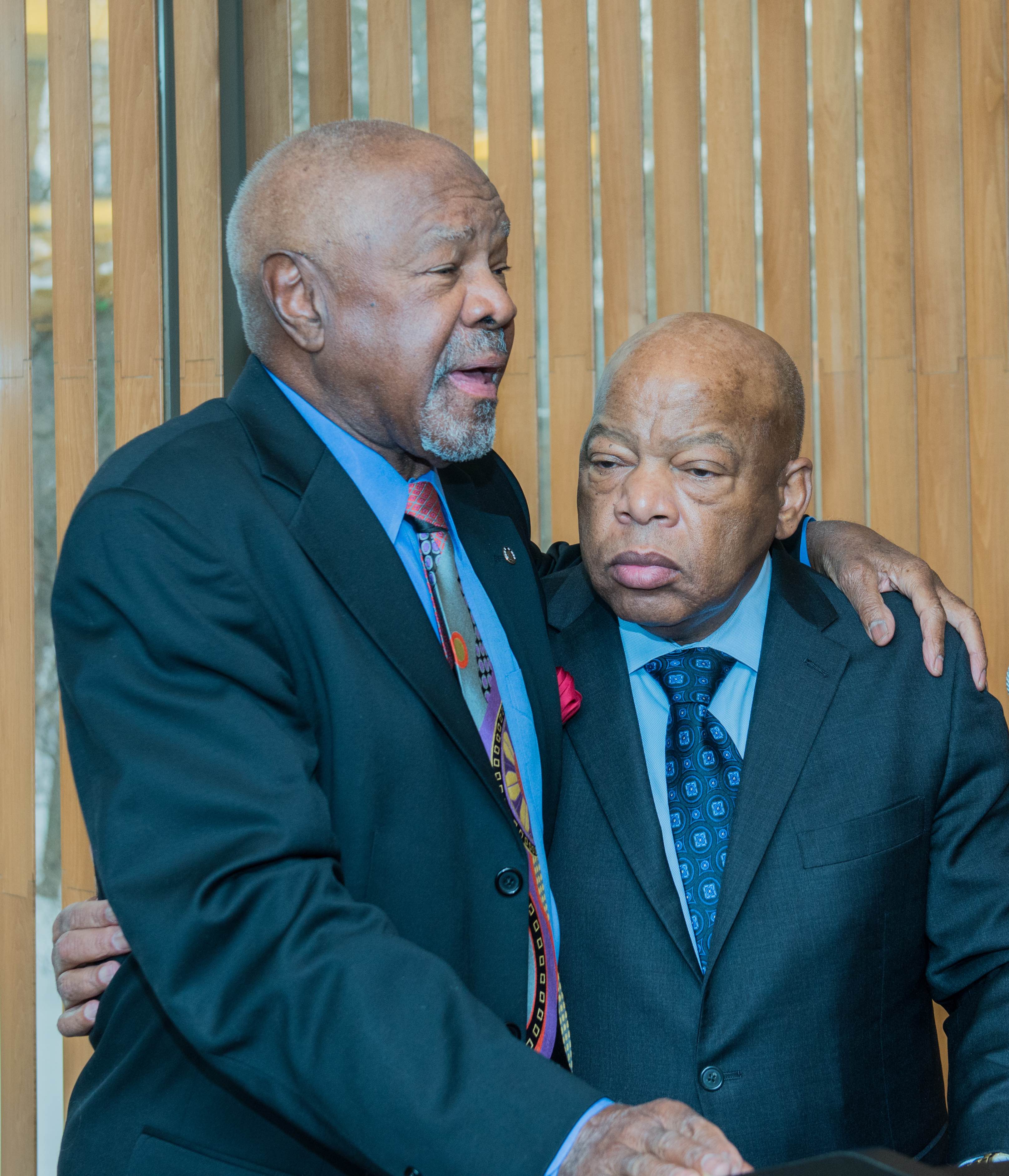Leading a movement
Anderson was born in Americus, Georgia, in 1927. He enlisted in the Navy during World War II, serving in what he said was the last all-Black company. He said he was the first Black soldier to become a hospital attendant as well. Once back home after the war, he graduated from what is now Alabama State University in 1949 and wanted to become a physician. There were few, if any, opportunities for Black students at medical schools in the South, but a family friend was the only osteopathic physician in Albany, Georgia. That friend had attended the Des Moines University College of Osteopathic Medicine, where Anderson would also attend.
Anderson received his certification in surgery before going to Flint, Michigan, for an internship. He completed that residency at the Flint Osteopathic Hospital in 1957 and thought about staying in Michigan to practice in Detroit. His wife, Norma, however, reminded him that he was needed where he came from. So, they packed their belongings and moved to Albany, the same town where his family friend had practiced.
Upon arrival, however, Anderson was denied hospital privileges. No Black doctor had ever been permitted to practice at a hospital in that Georgia county. So, Anderson opened his own family medicine practice, becoming one of the very few Black osteopathic physicians in the South. His practice thrived, even as he was prevented from treating certain patients. Discrimination existed beyond hospitals and private practices, Anderson knew.
His second-story office in Albany was located above the county clerk’s office. There, he watched as young Black citizens attempted to register to vote. They were intimidated and turned away, sometimes even arrested for misdemeanors. Anderson couldn’t take it, and soon he was protesting for civil rights along with his wife.
In 1961, working with Martin Luther King, Jr. and Ralph David Abernathy, Anderson became the leader of the Albany movement, the first mass effort to protest community segregation in the civil rights era. He took part in hundreds of marches and was jailed in 1962 during a march with King and Abernathy. “I would proudly live the last half of my life as a convicted felon,” Anderson wrote in 2015, “accused of obstructing justice by trying to change unfair laws made by people for whom I couldn’t vote.”
Shortly after the Albany movement, which, as the Detroit Free Press described, “brought down the wall of segregation in regional public facilities,” Anderson returned to Detroit for a medical residency. While he was able to practice at hospitals in Michigan, Anderson’s passion for providing care to local communities persisted.
That was also when he became involved with MSU as an adviser.
‘From Slavery to Freedom’

William G. Anderson with the late Rep. John C. Lewis at the 2015 “Slavery to Freedom” lecture series
During the first “Slavery to Freedom” series in February 2001, MSU welcomed Rev. Charles G. Adams, Rev. Wyatt T. Walker, Rev. Joseph Lowery and Rev. Otis Moss Jr., a former co-pastor at King’s church in Atlanta, to speak to the MSU community over four dates.
Anderson was thrilled to be a leader of the series and said the administration in the College of Osteopathic Medicine was supportive of his goal of bringing speakers who would shine a light on a history of civil rights maladies in the country.
Marita Gilbert, associate dean of diversity and campus inclusion at the College of Osteopathic Medicine, had attended the series in the 2000s when she was a doctoral student at MSU and said she looked forward to the events every year. Now she heads the program. “In my role as associate dean,” she said, “it is such an honor to be able to carry on the legacy of Dr. Anderson’s work. I hope that what I am doing is not just settling but expanding what this series means and inviting more people to be part of the conversation.
“What is important about the series is that we celebrate Black histories and Black herstories, but also Black futures. We are not just having conversations about what has already happened. We are hoping to invite folks to come in and talk about where we are now. What are the questions we should be asking now? What is the work we should be doing now? What are the preparations we should be making now? So that we are ready to support thriving and successful futures?”
“Who better to write down this history than our universities?” Anderson said when looking back on the first few years of the lecture series. “I had a free hand to bring in people who had experienced segregation and discrimination firsthand.”
So, he found people like the reverends who spoke at the first series. Then, he brought Abernathy’s wife, Juanita Jones Abernathy, in 2004. Bishop Vashti Murphy McKenzie, the first woman bishop in the African Methodist Episcopal Church, spoke on campus in 2008. Rep. John C. Lewis spoke to the university community in 2015.
Anderson noticed other schools creating similar lectures with visiting faculty shortly after the lecture series launched in 2001. “MSU’s mark has been made,” he said.
So, too, has Anderson’s. Now 94, he remains a civil rights icon and pioneer in his field. Osteopathic medicine continues to be a passion, one that he believes is necessary in communities all over the country. Back on campus at MSU, COM has grown since its early days in an old schoolhouse in Pontiac. Today, there are three campuses where future Spartan osteopathic physicians train: the East Lansing site, along with community-based locations in the Detroit Medical Center and the Macomb University Center in Clinton Township. More than 300 osteopathic students graduate each year, producing much-needed primary care physicians for the state.
“At one point, I could not even practice in rural areas in the South,” Anderson said. Now colleges of osteopathic medicine are providing care to communities throughout the country.
“I’m proud to say we set the stage for what is available in many communities throughout the United States — access to health care that did not exist before we came along.”
Learn about Black History Month events taking place at MSU throughout the month of February.
More information about the “Slavery to Freedom” lecture series is available on the College of Osteopathic Medicine website.



